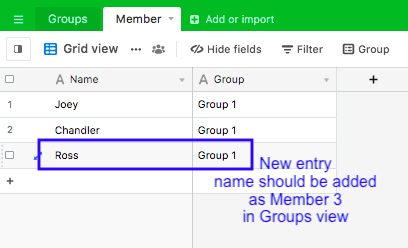Who knows how I can organize this?
I have two tables:
- Groups, with each 10 columns for the names of their members
- Members, with the data of all members of all groups
Now i want to automatically add the name of a new member to the first open spot of the particular group.
For example, if Joe is the 5th member signing up for Group X, then his name should automatically appear in column five of that group.
Is this possible?




